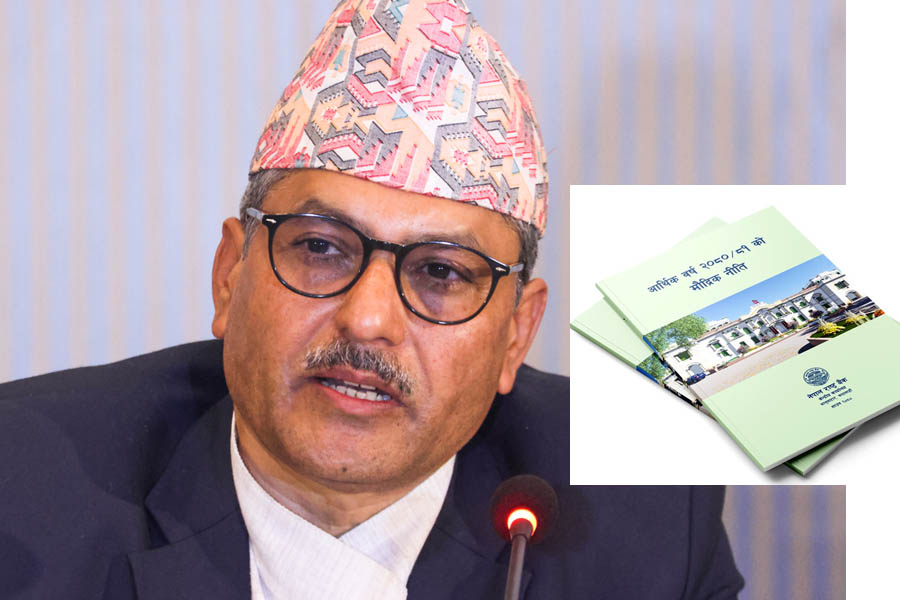
Kathmandu-Nepal, Nepal Rastra Bank recently unveiled its monetary policy for the financial year 080-81, with the aim of achieving a 6 percent economic growth rate. Governor Mahaprasad Adhikari asserted that a 'flexible' policy had been implemented to promote economic stability, enhance financial resource utilization, expand access to finance, and foster sustainable economic growth. However, the private sector has expressed reservations about the effectiveness of the policy in addressing the existing economic challenges and ensuring sustainable economic activity. One of the primary objectives of the monetary policy is to increase internal production capacity by channeling financial resources towards the productive sectors. To achieve this, policy rates have been lowered, with the policy rate reduced by 50 basis points to 6.5 percent. While the move may encourage banks to lower interest rates, there are concerns among businesses that this reduction may not be sufficient to stimulate demand in the productive sector.
Private traders have also raised concerns about the lack of clarity and direction in the monetary policy. The private sector had sought a more accommodative monetary policy to bolster the economy, but they feel that the policy falls short of meeting their expectations. While the policy introduces some innovative features, such as the introduction of permanent deposit facilities and relaxation of regulations on shares, real estate, and auto loans, it fails to address some of the critical challenges faced by businesses, especially in the troubled sectors. Economist and ex-executive director of Rashtra Bank, Nar Bahadur Thapa, believes that the monetary policy lacks innovation and is too tight to address the current economic issues. He argues that more efforts are needed to encourage credit expansion in the productive sector, promote SME financing, and create job opportunities. Additionally, there are calls from the private sector for a two percent premium on the base rate to incentivize credit expansion in productive sectors, which was not addressed in the current policy. Despite the concerns raised by the private sector, the monetary policy aims to accumulate foreign currency reserves to cover at least seven months of goods and services imports and keep inflation at 6.5 percent. The policy also emphasizes the importance of reducing credit concentration and promoting small and medium-sized productive businesses. One of the key features of the monetary policy is to accumulate foreign currency reserves equivalent to at least seven months of goods and services imports. Additionally, the central bank aims to implement a separate specialized regulatory body for savings and credit cooperatives, along with introducing a central customer identification system in coordination with relevant agencies. Despite its challenges and criticism, Governor Adhikari remains optimistic about the sustainability of economic activities and the potential impact of improved external sectors and increased liquidity in the banking system. Under the new monetary policy, Nepali citizens traveling abroad will enjoy an increased foreign currency exchange limit of up to 2500 US dollars, an increase from the previous USD 1500 limit. The policy also considers providing instruments to manage foreign exchange risks in external loans introduced by banks and financial institutions.
The key highlights of the monetary policy include:
Reduction in Policy Rates: The policy rate has been lowered by 50 basis points to 6.5 percent, while the bank rate remains unchanged at 7.5 percent. This move may potentially lead to lower interest rates for bank loans, depending on market conditions.
Emphasis on Productive Sector Lending: The central bank prioritizes channeling financial resources to the productive sector, particularly to support small and medium-sized businesses. To this end, regulatory policies have been formulated to enhance monitoring, regulation, and supervision of loans.
Foreign Currency Reserves: The policy aims to accumulate foreign currency reserves equivalent to at least seven months of goods and services imports, ensuring economic stability.
Encouraging Lending to Troubled Sectors: A framework has been established to support sectors facing difficulties, providing a safety net for businesses within agriculture, hydropower, and hotels.
Relaxation of Loan Policies: The monetary policy reviews risk weighting arrangements for share mortgage loans, real estate loans, and hire purchase loans. Risk burdens on certain types of loans have been reduced to facilitate lending.
Increased Loan Limit for Residential Home Loans: The loan limit for first-time home buyers has been raised from Rs 15 million to Rs 2 crore.
Despite the efforts to stimulate economic growth, some members of the private sector express dissatisfaction with the policy. Critics argue that the monetary policy lacks innovation and does not adequately address existing economic challenges. They call for more substantial lending in the productive sector and additional measures to support microfinance institutions, SMEs, and job creation.
However, Rashtra Bank officials assert that the policy is designed to sustain economic activities while preserving achievements in the external sector. They emphasize the importance of balancing the external and internal economic environment to ensure long-term economic stability.
The new monetary policy is not without its positive aspects, as it introduces several innovative measures, such as permanent deposit facilities and incentives for microfinance mergers. Moreover, the increased foreign exchange limit for Nepali travelers going abroad is expected to stimulate foreign currency inflows.
The success and impact of the monetary policy will depend on its implementation and adaptability to the ever-changing economic landscape. Only time will tell if the policy will effectively steer Nepal towards its economic growth targets and foster sustainable economic development.